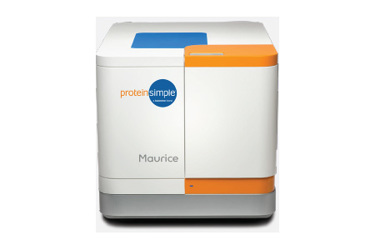icIEF Analysis Of Adeno-Associated Virus (AAV) Proteins For Gene Therapy

In medicine, gene therapy is the process where nucleic acids are delivered to a patient’s cells as a therapeutic drug to treat genetic diseases including hematological, immunological, neurodegenerative, and metabolic disorders, as well as several types of cancers. Once in the nucleus, the therapeutic DNA or RNA replaces a mutant gene with a functional gene, knocks-out a mutated gene that is functioning incorrectly, or introduces a new gene into the body to help fight disease. Moreover, the development of versatile gene-editing technologies like CRISPR, which make it faster and more reliable to modify target DNA, elevates the promise gene therapy holds as a potential treatment option.
All gene therapies utilize either viral or non-viral vectors to deliver the DNA or RNA into the host cell. Viral vectors infect the host cell to introduce the genetic material and are more efficient at transfecting the host cell compared to non-viral vectors like cationic lipids or chemical carriers. However, they can have immunogenic side effects depending on the specific virus used. Therefore, the choice of appropriate viral vector is a critical component when developing the drug. Adeno-associated virus (AAV) is non-pathogenic, and thus incurs only minimal immune response, making it an ideal gene therapy vector.
As with all therapeutic drugs, product characterization is of utmost importance in order to ensure drug safety and stability. For gene therapies, this includes characterizing the delivery vector before the drug is packaged. In this study, we demonstrate how imaged-capillary isoelectric focusing (icIEF) can be used to characterize the charge heterogeneity of AAV vectors to ensure product stability and identity. Maurice delivers this critical analysis as an automated platform that removes the variability typically encountered with platforms that require more hands-on time, and generates high-resolution data in less than 10 minutes. More importantly, Maurice offers 3-5x higher sensitivity than absorbance with the native fluorescence detection mode, offering significant advantages when characterizing low concentration AAV samples.
Request A Quote
Get unlimited access to:
Enter your credentials below to log in. Not yet a member of Bioprocess Online? Subscribe today.
